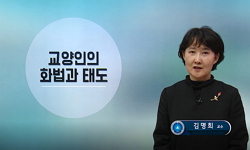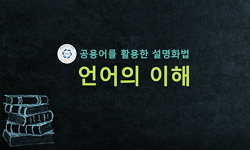경상북도 구미시 대둔사(⼤芚寺)는 1920년에 〈석가설법도〉와 〈십육나한도〉, 〈치성광여래도〉, 〈독성도〉, 〈산신도〉를 제작, 봉안했다. 이 불화들은 기존의 연구에서 크게 주목하지 ...
http://chineseinput.net/에서 pinyin(병음)방식으로 중국어를 변환할 수 있습니다.
변환된 중국어를 복사하여 사용하시면 됩니다.
- 中文 을 입력하시려면 zhongwen을 입력하시고 space를누르시면됩니다.
- 北京 을 입력하시려면 beijing을 입력하시고 space를 누르시면 됩니다.
https://www.riss.kr/link?id=A108083815
- 저자
- 발행기관
- 학술지명
- 권호사항
-
발행연도
2022
-
작성언어
Korean
-
주제어
대둔사 ; 불화 ; 도상 ; 화법 ; 고산축연 ; 금명운제 ; 초암세복 ; Daedun Temple ; Buddhist Paintings ; Iconography ; Style ; Kosandang Chukyun ; Kummyeongdang Wunje ; Choamdang Sebok
-
KDC
220
-
등재정보
KCI등재
-
자료형태
학술저널
-
수록면
115-139(25쪽)
- 제공처
-
0
상세조회 -
0
다운로드
부가정보
국문 초록 (Abstract)
경상북도 구미시 대둔사(⼤芚寺)는 1920년에 〈석가설법도〉와 〈십육나한도〉, 〈치성광여래도〉, 〈독성도〉, 〈산신도〉를 제작, 봉안했다. 이 불화들은 기존의 연구에서 크게 주목하지 않았던 작품군으로, 필자는 본고를 통해 그 양상과 의미를 조명해 보았다. 대둔사 불화들은 ‘선행 도상(圖像)의 변용’ 혹은 ‘추가’가 적극적으로 이루어져 있으며 서양화법(⻄洋畵法)도 구사되어 있다. 발원 시주자로는 상궁(尙宮)과 풍양조씨(豐壤趙氏) 일가 등 세도가(勢道家)와 비구니 스님들이 참여했다. 제작 화사(畵師)는 총 4인인데, 그중에서도 특히 고산축연(古山竺衍)과 금명운제(錦溟運⿑)가 주도적으로 그렸다. 화풍의 분석을 통해 볼 때, 축연이 〈십육나한도〉, 〈치성광여래도〉, 〈산신도〉를 주관했으며 운제는 〈석가설법도〉와 〈독성도〉를 주관했던 것으로 보인다. 대둔사의 불화 불사는 당시 이 절의 주지(住持)이자화주(化主)였던 초암세복(草庵世復)이 이끌었다. 그는 화승으로서 활약이 컸던 인물이기도한데, 그의 행적을 살펴본 결과, 기존에 그는 세도가들이 시주한 불화를 주로 제작했으며 축연 및 운제와도 화연(畵緣)이 깊다는 사실을 알 수 있었다. 따라서 대둔사 불화는 시주자의 모연(募緣)에서부터 불화의 제작에 이르기까지 모두 세복의 역할이 지대했다고 볼 수 있다. 그리고 이러한 내용을 종합해 볼 때, 1920년작 대둔사의 불화들은 당시 발원 시주자, 화사들의 동향과 제작 양상을 파악하는데 중요한 작품군이라고 판단된다.
다국어 초록 (Multilingual Abstract)
Buddhist Paintings - including, Shakyamuni Preaching, The Sixteen Arhats of Engjinjeon Hall, Tejaprabha Buddha Preaching, Doksung, Solitary Saint, and Mountain Gods of Samsunggak Hall - were created in 1920 at Daedun Temple of Gumi-City, Kyungsangnamd...
Buddhist Paintings - including, Shakyamuni Preaching, The Sixteen Arhats of Engjinjeon Hall, Tejaprabha Buddha Preaching, Doksung, Solitary Saint, and Mountain Gods of Samsunggak Hall - were created in 1920 at Daedun Temple of Gumi-City, Kyungsangnamdo Province. They exhibit various characteristic stylistic features, such as the transformation and overlap of iconographies, addition and harmony of motifs, and realism through western painting style. Appreciated by the court ladies, Sanggung and Pungyang-jo Clan, and Buddhist nuns, the paintings were created by four monk artists. Among the painters, Chukyun (Kosandang) and Unje (Kummyungdang) were most prominent. Following analysis of the painting styles, it was determined that Chukyun painted the Sixteen Arhats, Tejaprabha Buddha Preaching, Sansin, the Mountain God and Unje painted Shakyamuni Preaching and Doksung, Solitary Saint. The Buddhist paintings of Daedun Temple were supervised by Sebok (Choamdang), the head of the temple and the overseer of this activity. Upon examining his activities, it was found that he produced Buddhist paintings commissioned by ruling classes, and that he had a deep relationship with Chukyun and Unje. The patrons and painters of the Daedunsa Buddhist paintings also confirmed that Sebok was directly or indirectly related to those who had previously interacted. The Buddhist paintings produced in 1920 in Daedun temple provide important data for understanding the trends of patrons and painters at that time. In addition, iconography and style also provide important insight into the production aspects of the time.
목차 (Table of Contents)
- 한글요약
- Ⅰ. 머리말
- Ⅱ. 불화의 현황과 화풍
- Ⅲ. 발원 시주자와 제작자
- Ⅵ. 초암세복과 대둔사 불화
- 한글요약
- Ⅰ. 머리말
- Ⅱ. 불화의 현황과 화풍
- Ⅲ. 발원 시주자와 제작자
- Ⅵ. 초암세복과 대둔사 불화
- Ⅴ. 맺음말
- 참고문헌
- Abstract
동일학술지(권/호) 다른 논문
-
17~18세기 승군역(僧軍役) 운영방식의 변화와 의승방번전제(義僧防番錢制)의 시행
- 동국대학교 불교문화연구원
- 박세연(Park, Sei-Yeon)
- 2022
- KCI등재
-
- 동국대학교 불교문화연구원
- 차창용(Cha, Chang-Yong)
- 2022
- KCI등재
-
대원제국(大元帝國)을 통한 위구르와 서하 불교 도상의 고려 전달
- 동국대학교 불교문화연구원
- 조성금(Cho, Sung-Kum)
- 2022
- KCI등재
-
- 동국대학교 불교문화연구원
- 이성운(Lee, Seong-Woon)
- 2022
- KCI등재





 DBpia
DBpia






